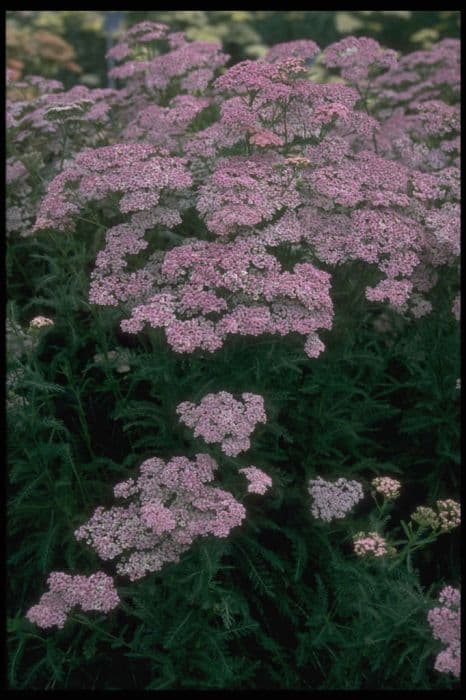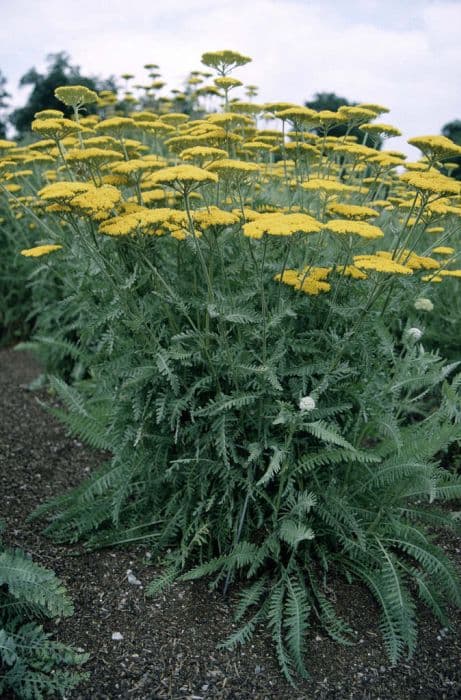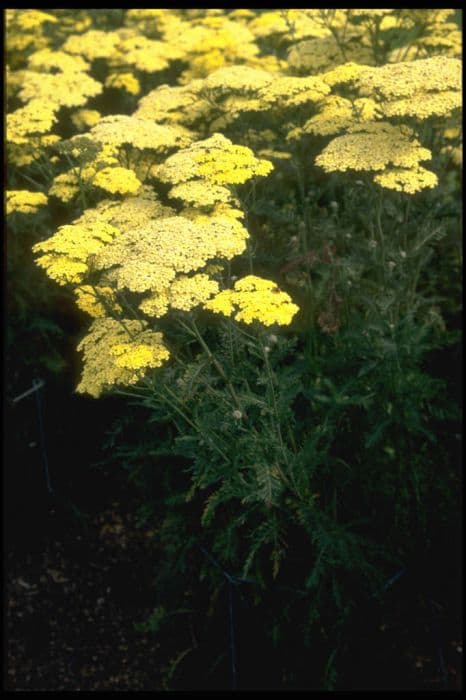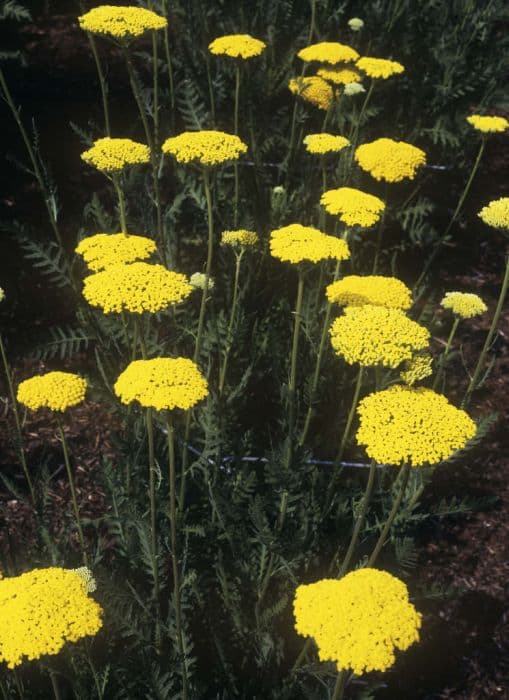Tickseed Coreopsis 'Star Cluster' (Big Bang Series)

ABOUT
Coreopsis 'Star Cluster' (Big Bang Series) is an attractive perennial showcasing an eye-catching display of flowers and foliage. The plant bears daisy-like blooms that are a visual delight. The flowers are characterized by their unique coloration, predominantly a creamy white with a striking purple-red eye in the center. As the flowers mature, their colors can transition, creating an enchanting effect of varying shades over time. The petals of the flowers are notched, lending a textured and somewhat frilly look to the blooms. These petals radiate around a central, darker-hued disc that contrasts beautifully with the lighter petal shades, enhancing the starry appearance that gives the plant its name. The foliage of Coreopsis 'Star Cluster' is lush and adds an excellent backdrop to the floriferous display. The leaves are slender, elongated, and bright green, forming a bushy clump that complements the vibrancy of the flowers. This perennial is a favorite for its long-lasting blooms, which can persist for much of the summer into early fall, ensuring a season full of color. Together with its blooms and foliage, Coreopsis 'Star Cluster' makes a charming addition to any garden space, attracting bees, butterflies, and other pollinators, which adds even more life and movement to the scene it creates. Its resilience and ease of care also contribute to its popularity among gardeners seeking to add a touch of enduring beauty to their landscape.
About this plant
 Names
NamesFamily
Asteraceae
Synonyms
Tickseed, Pot of Gold
Common names
Coreopsis 'Star Cluster'
 Toxicity
ToxicityTo humans
Coreopsis, in general, is not considered toxic to humans. There have been no significant reports of poisoning or adverse effects from ingesting this plant. Thus, Coreopsis 'Star Cluster' is unlikely to be harmful if accidentally ingested in small quantities. However, it is still advisable to avoid consuming any part of ornamental plants, as they are not intended for human consumption.
To pets
Coreopsis is generally not toxic to pets. It is not listed among plants that are known to cause adverse effects in domestic animals. Therefore, Coreopsis 'Star Cluster' should not cause any symptoms of poisoning if ingested by pets like dogs or cats. However, it is always a good practice to monitor pets and prevent them from eating plants not meant for their consumption to avoid any potential digestive upset.
 Characteristics
CharacteristicsLife cycle
Perennials
Foliage type
Deciduous
Color of leaves
Green
Flower color
White
Height
1-2 feet (30-60 cm)
Spread
1-2 feet (30-60 cm)
Plant type
Herb
Hardiness zones
5
Native area
North America
Benefits
 General Benefits
General Benefits- Aesthetic Appeal: Adds vibrant color and texture to gardens with its striking white flowers with a dark purple center.
- Attracts Wildlife: Draws in beneficial insects such as butterflies and bees, which are essential for pollination.
- Drought Tolerance: Once established, Coreopsis 'Star Cluster' is known for its ability to withstand dry periods, making it suitable for xeriscaping.
- Low Maintenance: Requires minimal care once established, making it an excellent choice for busy gardeners or those new to gardening.
- Long Blooming Season: Provides a long show of flowers from early summer to fall, ensuring lasting color in the landscape.
- Deer Resistance: Less appealing to deer, which helps to prevent damage to the plant and maintain its aesthetic value.
- Adaptability: Thrives in a variety of soil types, though it prefers well-drained soils and full sun to light shade conditions.
- Easy Propagation: Can be easily propagated by division or seeds, allowing gardeners to expand their garden without additional costs.
- Versatility: Suitable for borders, mass plantings, containers, and as a cut flower, providing multiple uses in the landscape design.
 Medical Properties
Medical PropertiesThis plant is not used for medical purposes.
 Air-purifying Qualities
Air-purifying QualitiesThis plant is not specifically known for air purifying qualities.
 Other Uses
Other Uses- Artistic Inspiration: Coreopsis 'Star Cluster' can be used by artists for its visually striking flowers as inspiration for paintings, textile patterns, or decor designs, enhancing creative works with its bold colors.
- Photography Subject: Its distinctive flowers make Coreopsis 'Star Cluster' an appealing subject for photographers, especially those specializing in macro photography and garden landscapes.
- Educational Tool: Botany educators can use Coreopsis 'Star Cluster' to teach students about pollination and the role of pollinators, as it attracts a variety of bees and butterflies.
- Culinary Garnish: The bright petals of Coreopsis 'Star Cluster' may be used as an edible garnish to add a splash of color to salads and desserts, though they should be used sparingly and only if grown without pesticides.
- Dye Source: Coreopsis 'Star Cluster' can provide natural pigments for fabric dyes, ideal for hobbyists interested in sustainable textile coloring methods.
- Craft Material: The dried flowers and seed heads can be used in crafting, such as in making potpourri, dried flower arrangements, or for inclusion in homemade paper.
- Sentimental Keepsakes: The flowers of Coreopsis 'Star Cluster' can be pressed and preserved in scrapbooks or used to create personalized bookmarks and greeting cards.
- Theme Gardens: These plants can be used to create a celestial-themed garden space, playing off the 'Star Cluster' name to evoke a sense of the night sky on earth.
- Literary Muse: The beauty and name of Coreopsis 'Star Cluster' can provide inspiration for poets and writers, evoking themes of nature, beauty, and the cosmos.
- Eco-friendly Confetti: The petals can be used as biodegradable confetti for outdoor celebrations, reducing environmental impact compared to traditional plastic confetti.
Interesting Facts
 Feng Shui
Feng ShuiThe Coreopsis is not used in Feng Shui practice.
 Zodiac Sign Compitability
Zodiac Sign CompitabilityThe Coreopsis is not used in astrology practice.
 Plant Symbolism
Plant Symbolism- Cheerful Optimism: Coreopsis, commonly known as Tickseed, is often associated with cheerfulness due to their bright, sunny flowers that bloom throughout the summer months, radiating positivity and optimism.
- Love: The vibrant colors of the Tickseed can symbolize affection and the pursuit of love, as the bloom's hearty nature is reminiscent of a resilient love that can endure challenges.
- Good Fortune: In some traditions, Tickseed is believed to bring good luck to whoever plants it, likely because it grows easily and prolifically, heralding an abundance of blossoms and, metaphorically, an abundance of fortune.
- Hope: With its bright and continuous flowers, Tickseed can represent hope, as it continues to flower even in adverse conditions, thus inspiring the belief that perseverance leads to positive outcomes.
 Water
WaterTickseed 'Star Cluster' prefers consistent moisture, particularly during hot, dry periods. During the growing season, water thoroughly once a week, providing about one inch of water each time. Ensure the soil is well-drained, and avoid overhead watering to prevent foliar diseases. During periods of rainfall, reduce supplemental watering. Mature plants can handle occasional drought, but for best blooming, maintain even moisture.
 Light
LightTickseed 'Star Cluster' thrives in full sun and requires at least six to eight hours of direct sunlight daily. Plant it in a spot where it will receive ample light without obstruction to encourage vibrant blooms and healthy growth. Avoid heavily shaded areas which could lead to poor flowering and weaker plants.
 Temperature
TemperatureTickseed 'Star Cluster' performs best in temperatures between 60° to 80°F. It can survive minimum temperatures as low as 20°F and maximum temperatures above 90°F, but prolonged exposure to extremes can stress the plant. Ideally, aim to provide conditions that stay within its preferred temperature range.
 Pruning
PruningPrune Tickseed 'Star Cluster' to remove spent flowers and encourage a second blooming. This practice, known as deadheading, also prevents self-seeding if not desired. Cut back the foliage to a few inches in late fall or early spring to promote fresh growth. An annual pruning schedule is typically adequate for maintaining plant health and vigor.
 Cleaning
CleaningAs needed
 Soil
SoilTickseed 'Star Cluster' thrives in well-draining soil mix composed of loam, sand, and compost in equal parts, with a pH range of 6.0 to 6.8, ensuring good nutrient availability and proper drainage.
 Repotting
RepottingTickseed 'Star Cluster' generally does not require frequent repotting and can be done every 2 to 3 years or when it outgrows its current container.
 Humidity & Misting
Humidity & MistingTickseed 'Star Cluster' is tolerant of a wide range of humidity levels and does well in the average outdoor humidity without specific requirements.
 Suitable locations
Suitable locationsIndoor
Keep Tickseed in bright light, water moderately, and ensure good air flow.
Outdoor
Plant Tickseed in full sun, well-drained soil, and space them aptly.
Hardiness zone
5-9 USDA
 Life cycle
Life cycleCoreopsis 'Star Cluster', commonly known as Tickseed, begins its life as a seed that germinates in spring when soil temperatures warm. After germination, the seedling emerges and begins vegetative growth, developing a rosette of leaves at the ground level. As the plant matures, it undergoes a period of rapid stem elongation and leaf expansion during the late spring to early summer months. Floral buds develop and bloom into distinctive white flowers with a purple eye from early summer to fall, attracting pollinators. Following pollination, Tickseed sets seed which, depending on the climate, may drop to the ground and lie dormant until the following spring or germinate immediately if conditions allow. In winter, the plant may die back, especially in colder climates, to re-emerge from its root system or fresh seed the next year.
 Propogation
PropogationPropogation time
Spring-Early Summer
The most popular method of propagating Coreopsis 'Star Cluster' is through division. Division is best done in the spring or early fall when the plant is not in active bloom. Carefully dig up the clump of Coreopsis 'Star Cluster' and gently separate the plant into smaller sections, making sure each section has a good amount of roots attached. These sections can then be immediately replanted into a well-draining soil mix, positioned so the crown is at the same level it was in the previous location. Water the new plants thoroughly to help establish them. Division rejuvenates older plants and is an excellent way to propagate this perennial while maintaining the plant's health and vigor.









